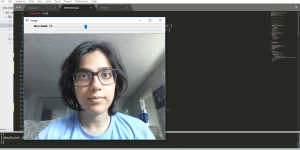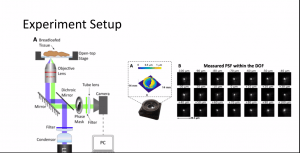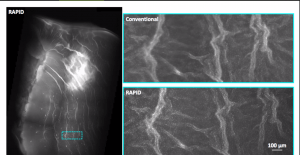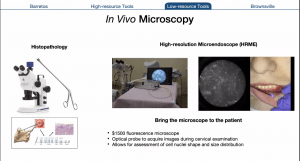Red Eye
This week started with a lot of excitement as we were able to finally get our eye-tracking program working with some assistance (Leon, Daniel & Chris- shout out!). I’ve attached my first try at this- it was remarkably hard to actually get the right threshold. Funny enough, my fellow RETs seem to have in the range 20-50, while I was actually 77. It might be interesting to explore how the threshold ties in with the lighting in the room. Below is my first attempt at eye tracking, if you look closely you’ll see a red circle on the left pupil. Our weekly article informed us that this particular tracking is classified as a geometric gaze model- due to the fact that the computer is trying to find the circular shape of the pupil.
Attempt at Snapchat Filter
Started my feeble attempt at making a googly eye snapchat filter. I realized I needed a different version of Python to install Dlib. I’ll be continuing this project next week as I would love to learn this- my students would be thrilled to do this- even if it is complicated.
Brain·i·ac
Our mentor this summer, Mary shared her research with us. Her research focuses on a microscope called RAPID- which stands for Real-time Artificial-intelligence-enabled Pathology for Intraoperative margin Detection. This talk was quite interesting, but it had concepts that were way above my intelligence level. I’ve attached a picture to show how the RAPID microscope works.
Here is how RAPID microscope does in comparison to a conventional microscope. It is visible that the quality of the slides is clearly better with a RAPID microscope.
Obama TIDBIT: Mary shared an interesting article where Obama’s face was almost fitted with white features due to a dataset that only included Caucasian males- it is important for us to realize that our results will only be as efficient as our dataset, if our dataset is biased- our results will be too. Therefore, when collecting samples we have to ensure that the dataset is of a wide variety.
Brady’s research was on cancer prevention in rural areas. He was able to put his bio-engineering degree to excellent use. His project focused on a mobile truck pap smear program that was offered to assist in the early detection and treatment of cervical cancer in women living in the rural areas. Unfortunately, it is noted that 40% of women do not come to the Central hospital for diagnostic follow-up and treatment due to the distance barrier.
Here is where the Brady’s research team is able to design new technologies that are not only cost effective but reduce result time in cervical cancer detection. While the standard methods for cervical cancer prevention are pap smear test, colposcopy, histopathology, and loop electrosurgical excision procedure- the research is able to design some scaleable methods such as rapid HPV test, mobile colopscopy, mobile microendoscopy, and portable thermocoagulator which can be used by a single practitioner in a single visit in conjunction with low-cost training kit.
Focus on Presentation
The rest of the week was focused on creating our first draft for the presentation next Friday- stay tuned!





